- Timeline
- Who voted for Hitler
- Hitler’s Personality
- Hitler’s Strategy
- Economy and the Great Depression
- Conservatives
- How did Hitler become Chancellor?
- Was there already a dictatorship in place before Hitler?
- Student Arguments
- Perspectives and Historiography – See Rise to Power
1.Timeline
1914-18 Corporal in the German Army, decorated with the Iron Cross as a runner/messenger. Germany sign the Armistice 11/11/18.
1919 Became a member of the German Workers Party (DAP). Treaty of Versailles signed.
1920 DAP renamed National Socialists German Workers Party (NSDAP). Hitler became leader in 1921. Twenty-five point programme announced.
1923 Munich Putsch
1924 Hitler in Landsberg Prison where he wrote Mein Kampf
1925 Hitler agreed to obey German law and aim to take power democratically.
1928 The May election saw the Nazis achieve only 2.6% of the vote.
1932 July election saw the Nazis taking the most votes, 37.3%.
1932 The November election saw their vote decline to 33.1%
1933 Hitler becomes chancellor in January.
1933 February, the Reichstag burns down. Hitler persuades Hindenburg to pass the Reichstag Fire Decree.
1933 March, the first concentration camp at Dachau opens. Election sees their vote increase to 43.9% and the Enabling Act is also passed.
2.Who voted for Hitler
Look at the following map from Brilliantmaps.com. What does it show you about who voted for Hitler? Can you work out why?
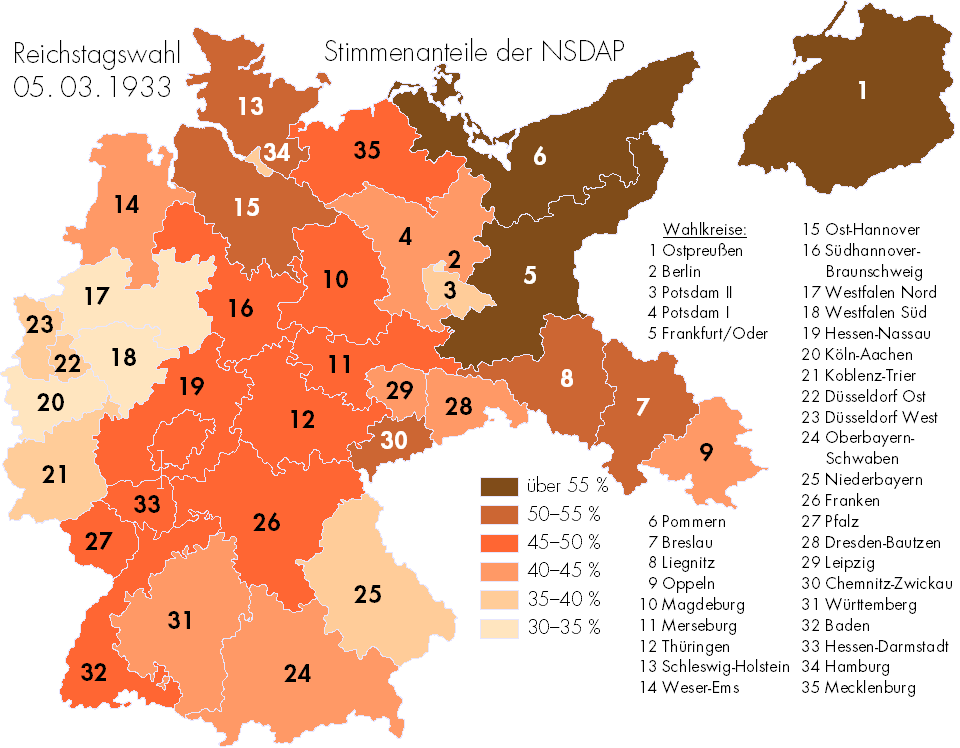
Why did the nazis hijack the Swastika?
3. Hitler’s Personality
Hitler and Stalin’s utopian dreams
Women
4. Hitler’s Strategy
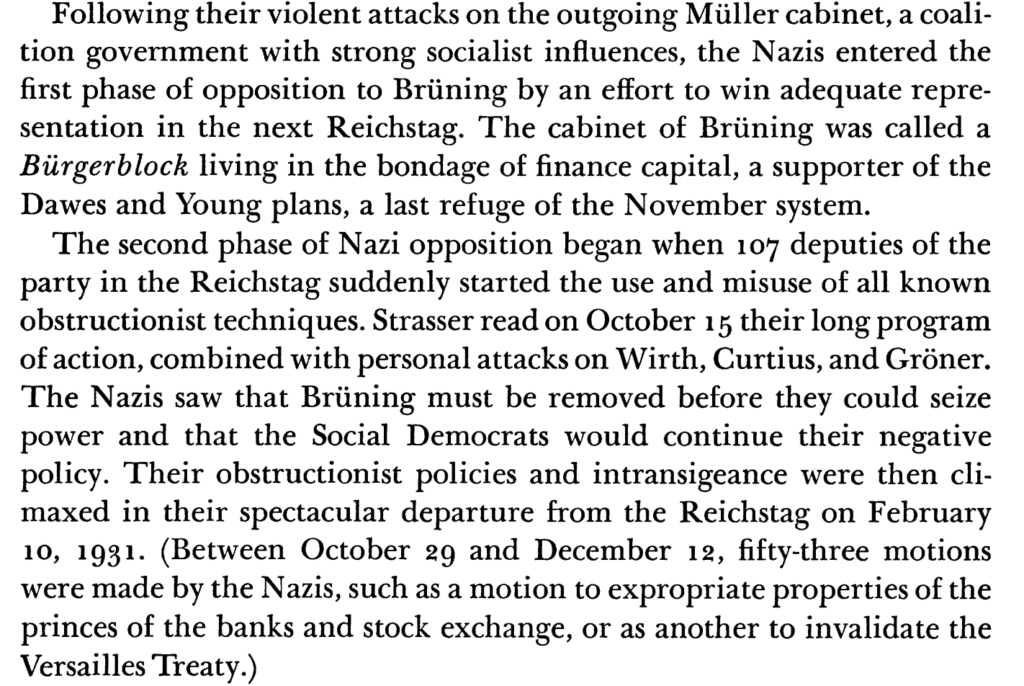
May 30, 1932, Ralph Haswell Lutz, Pacific Historical Review , Mar., 1941, Vol. 10, No. 1 (Mar., 1941), p. 6
Harzburg Front – The Pan Germans, conservatives, and German Nationalists now decided to become partners with Hitler in a common front. “The Harzburg decisions were to force the Reichstag to withdraw its confidence from the Brüning ministry, to invalidate the emergency decrees, to rid Prussia of the Catholic-Socialist coalition, and to request the
President to dissolve the Reichstag and to order new elections on November 8, 1931.” (Lutz, p. 7).
Hitler wanted these to build on his success in 1930, he believed that the party was increasing in support and he would be able to assume command of Germany soon. But he needed elections to prove his support, destabilising the current government would help achieve this. In this, one could argue that he was successful, there were several between 1930 and 1932. He even opposed Brüning’s proposal that Hindenburg be given a second term in 1932 without going through the process of being elected. This forced yet another election, although one in which Hitler lost.
5. Economy and the Great Depression
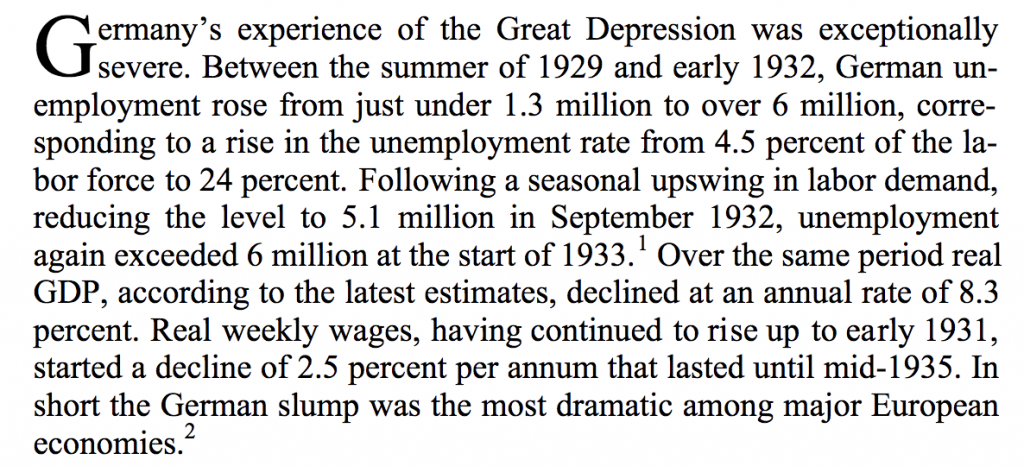
Austerity helped Hitler and the Nazis into power.
Nazi social and economic policies
‘Germany’s financial crisis precipitated the collapse of the Weimar Republic with frightening speed.’ Analysis of Historian Tobias Straumann.
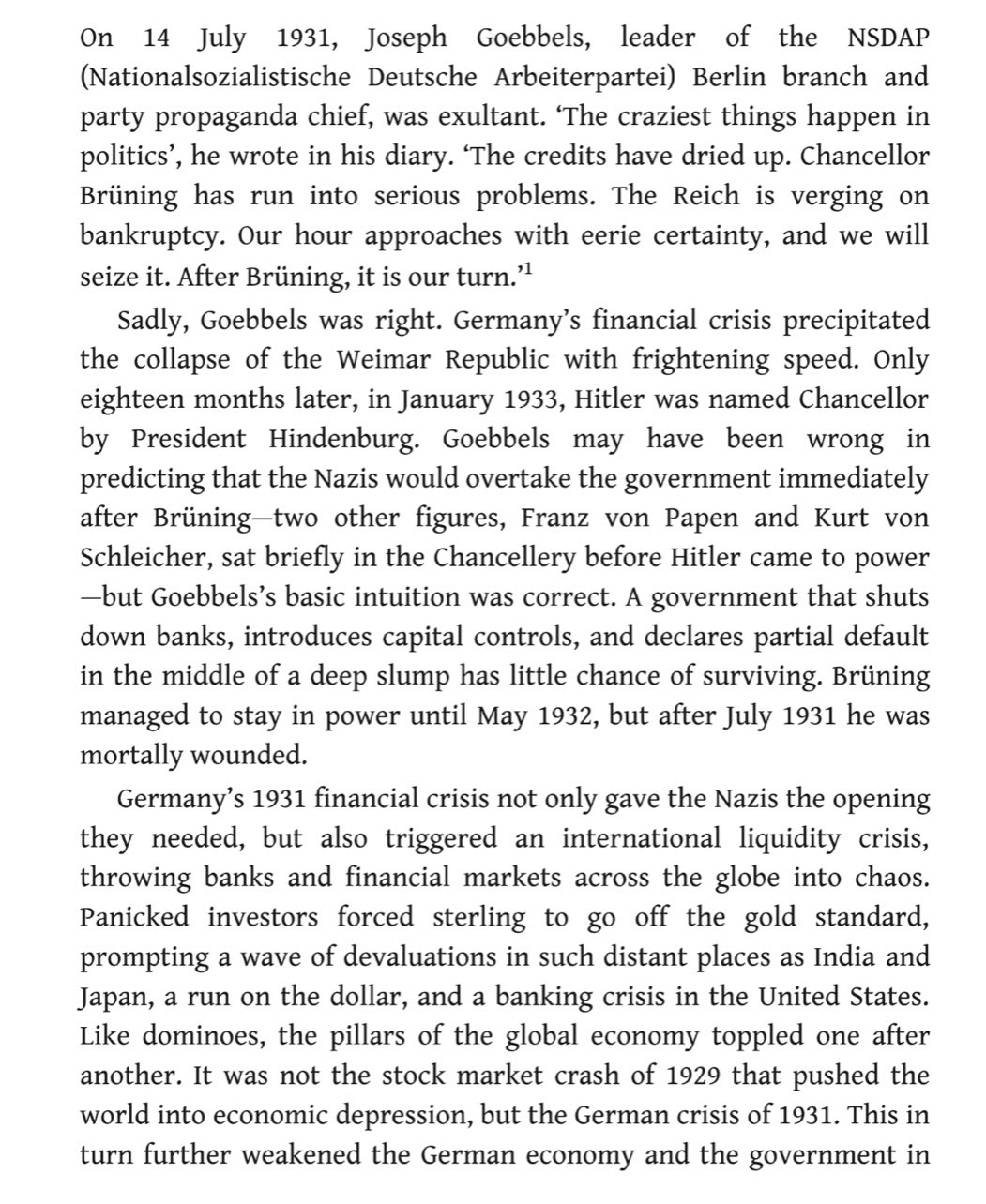
MEFO Bills
6. Conservatives
The Social Democrats were clearly against Hitler becoming president. The following was published in their newspaper (taken from Volker Ullrich’s Hitler, Ascent 1889-1936).

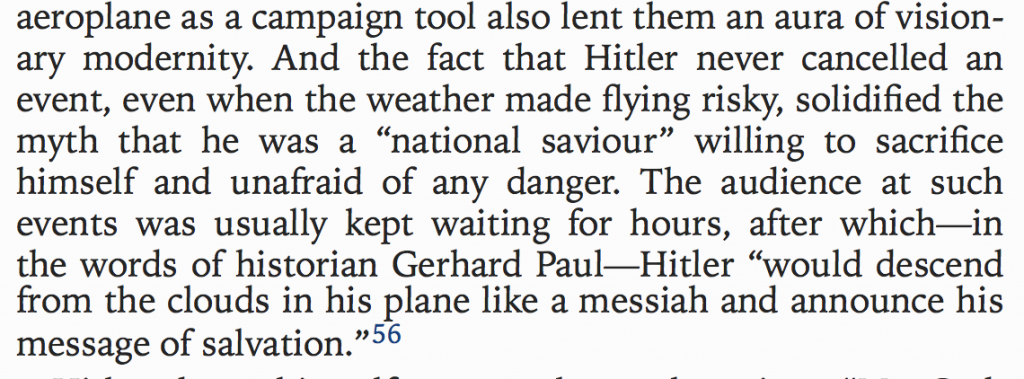
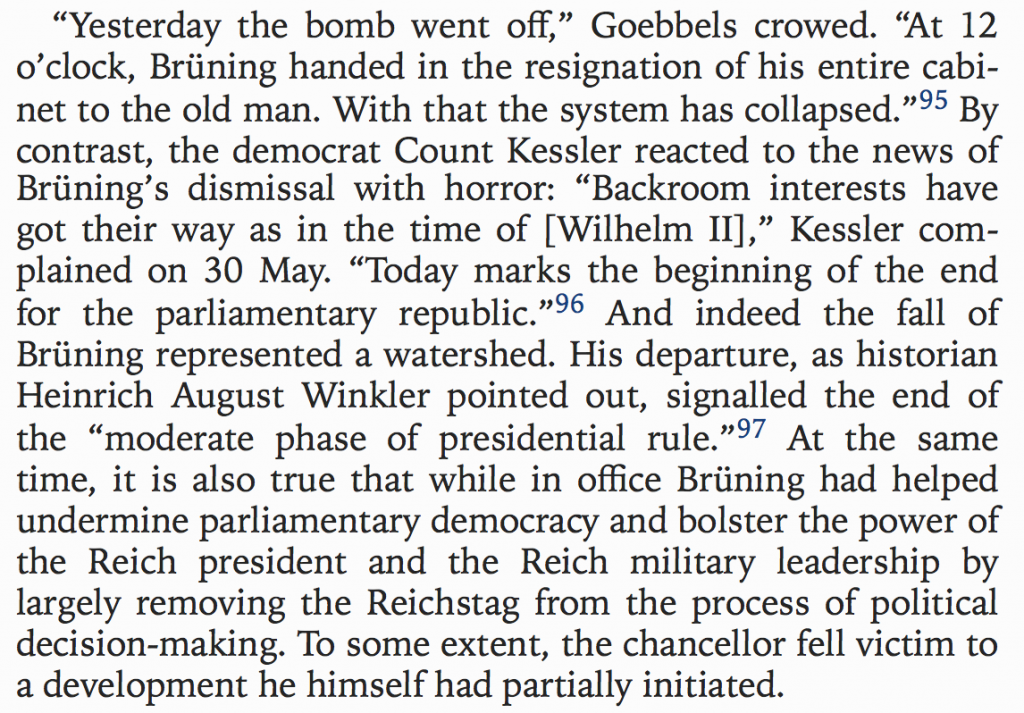
Perhaps the conservatives never accepted the democracy imposed on them by the allies after the First World War and fought throughout the 1920s and 30s to restore a monarchy. President Hindenburg was against the Weimar Republic from the outset and he readily used Article 48 to override the power of the Reichstag.
President Friedrich Ebert used Article 48 sixty-three times in 1923–24 alone to deal with critical economic dangers facing Germany. Yet, each time he returned his dictatorial powers after a short period time. https://encyclopedia.ushmm.org/content/en/article/article-48

7. How did Hitler become Chancellor?
Hitler becoming Chancellor by Volker Ullrich
Read the chapter summary above and evaluate Ullrich’s reasons for how Hitler came to power. Does he fall in the intentionalist or structuralist group of historians?
8. Was there already a dictatorship in place before Hitler?
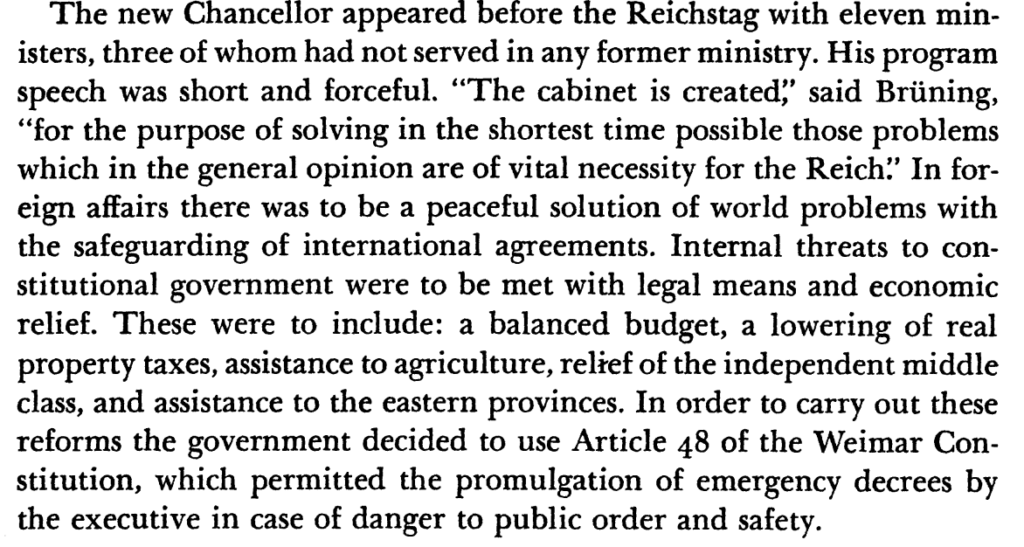
May 30, 1932, Ralph Haswell Lutz, Pacific Historical Review , Mar., 1941, Vol. 10, No. 1 (Mar., 1941), p. 2
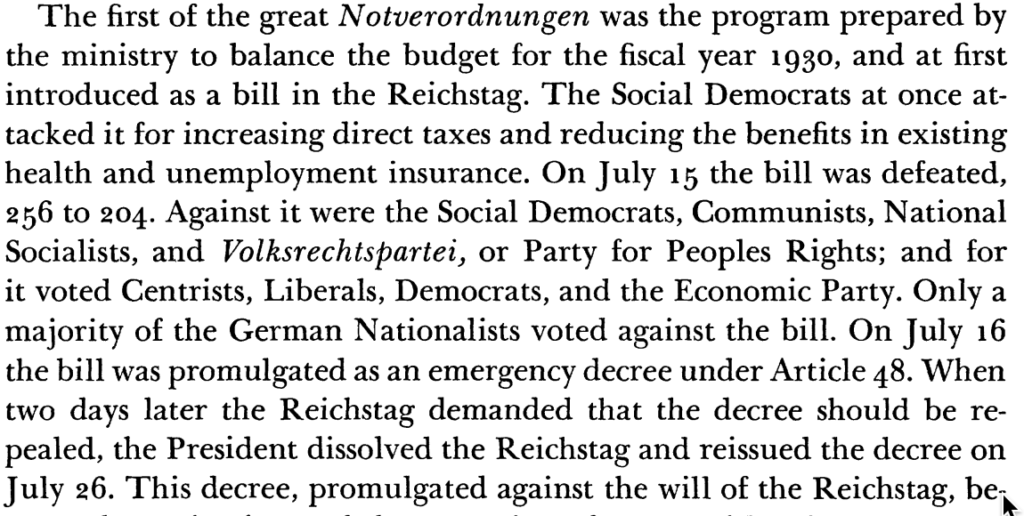
Brüning also passed other polices on tax, unemployment, pensions and business relief in which Article 48 was again used. The Reichstag had the power to appeal, and did so, but was never able to command a majority to be successful. At each stage, the Socialists sided with Brüning as they did not want the nationalists gaining power. It is important to acknowledge that the President had the executive power in Germany and the Chancellor could only act if he had the support of Hindenburg in this case.
7. Student Arguments
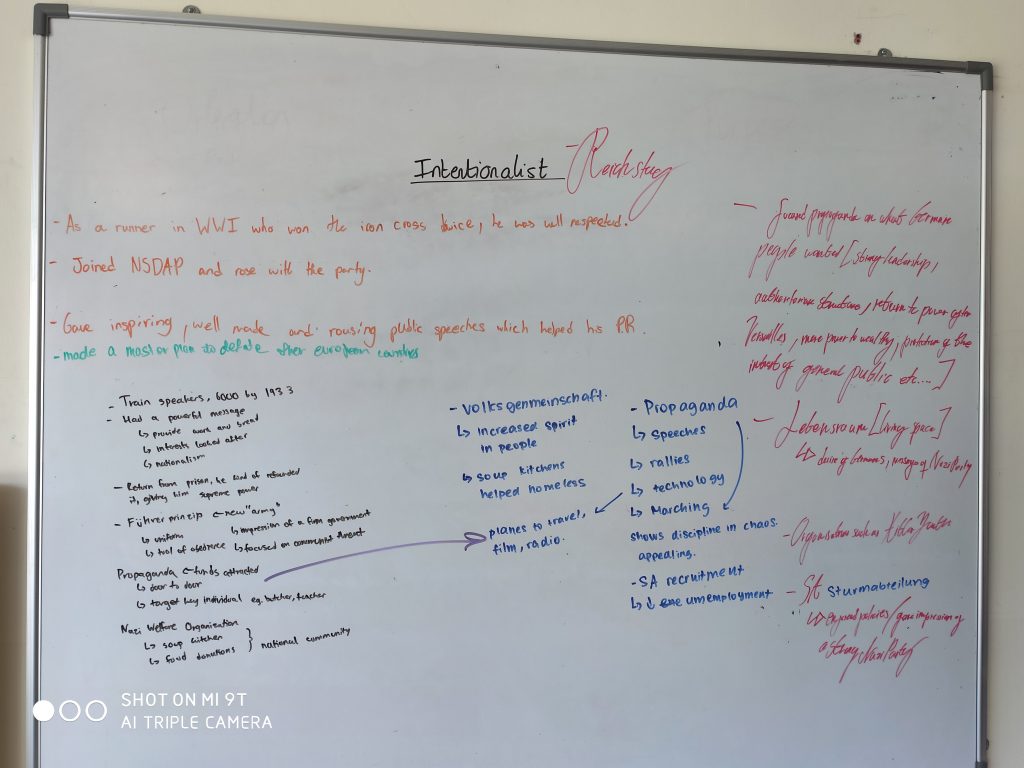
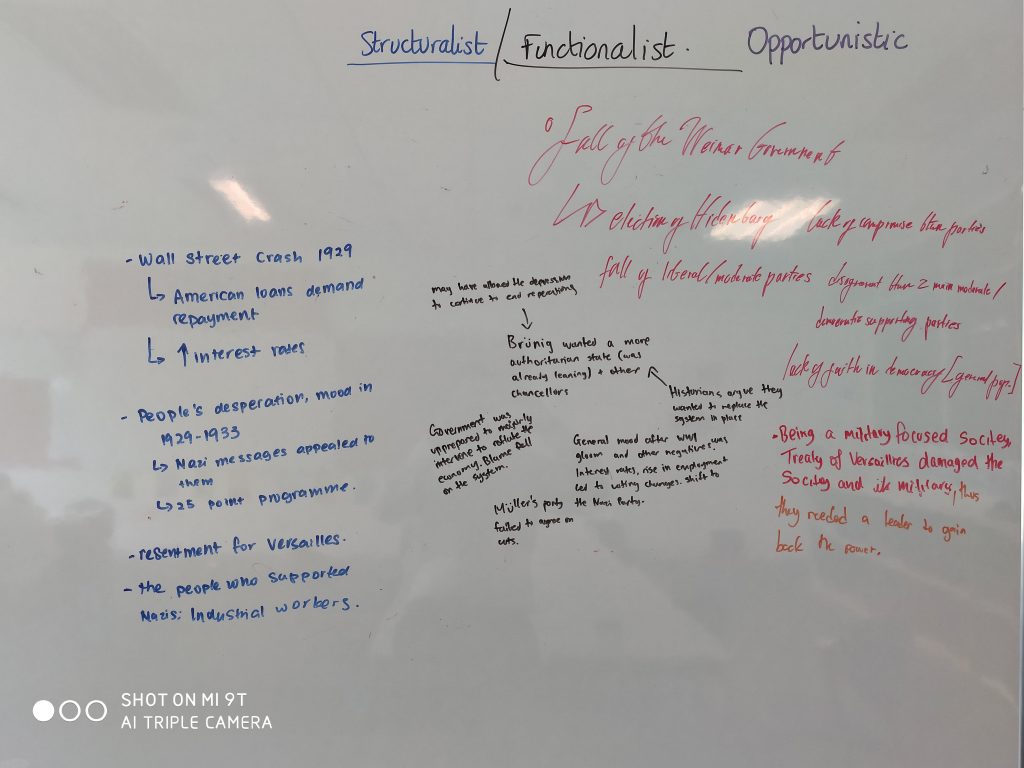
Essay 1

Essay 2
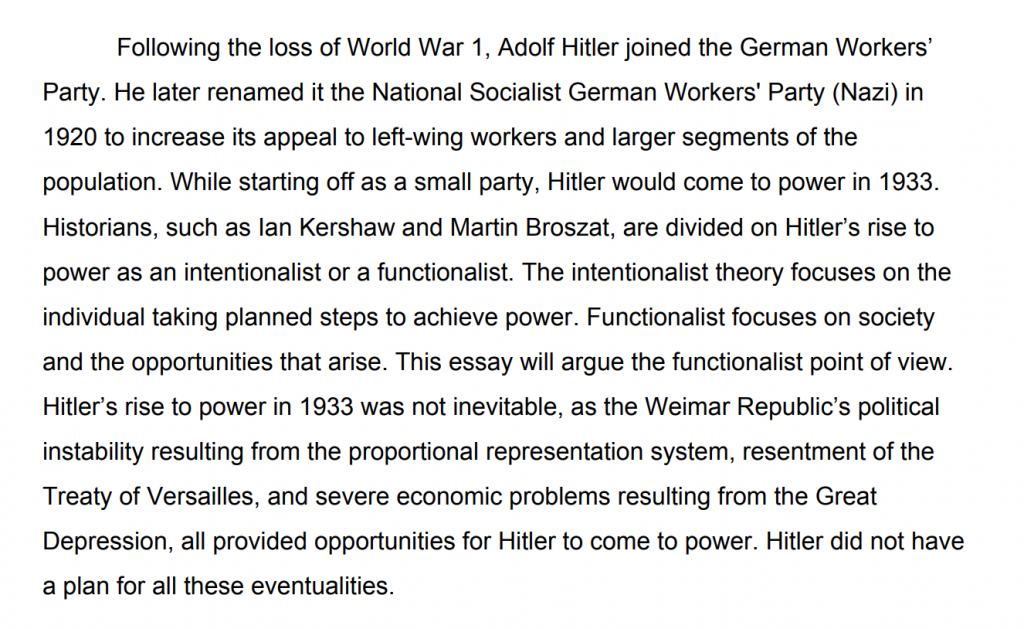
Essay 3
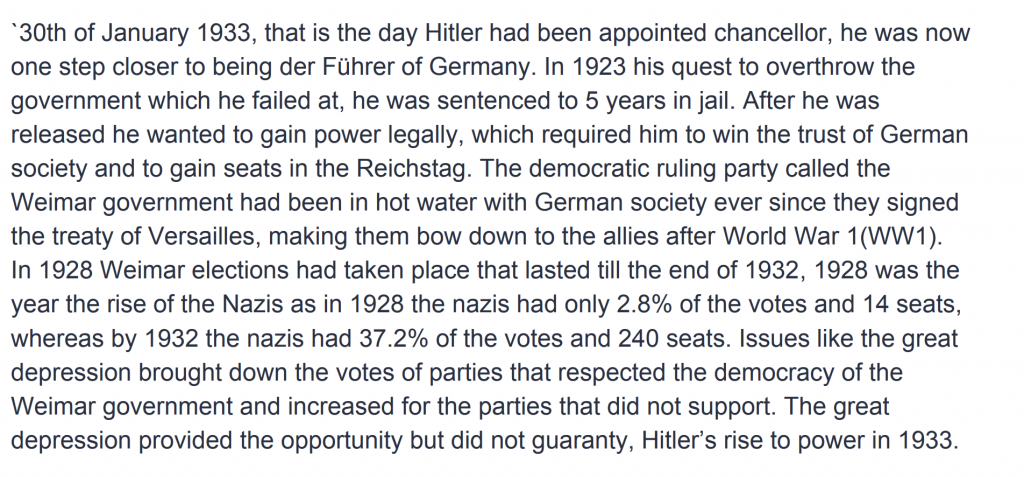
Essay 4

